In addition to the dozens of people who volunteer as CMTA Branch Leaders and board members, we’re very fortunate to have another group of stellar volunteers helping us motivate and inspire members of our CMTA family to get involved, stay active and maintain health and mobility as they deal with the challenges of living with CMT. These superstars help to provide information, resources and support to members of our CMTA community and we are incredibly grateful for their time and dedication!
We’d like to put them in the spotlight and share their stories and the way they contribute. If you would like to learn more about joining our wonderful volunteer team, please contact Director of Community Outreach Laurel Richardson at laurel@cmtausa.org.
CMTActive on Facebook (www.facebook.com/groups/cmtactive/)
Benjy Hershorn (CMTActive Moderator and Houston Branch Leader)
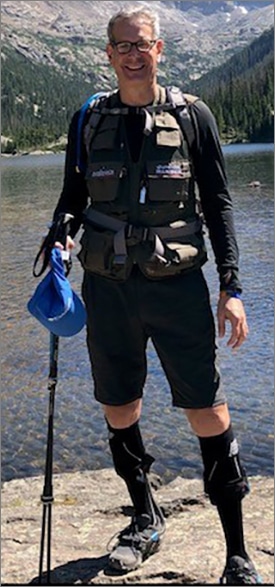
My name is Benjy Hershorn. Although born and raised in Kansas, I got to Texas “as fast as I could” via the University of Texas—a Longhorn. I am a sixty-something commercial real estate professional. I have deep roots in Texas, with two wonderful grown daughters and am active as a volunteer in my community(s) in Houston. Oh, by the way,I have adult onset CMT Type 2D. Of course, my CMT is not an afterthought. However, I work on maintaining a full and vibrant life. The CMTA is very important to me. Like many, it was one of the first “stops” to try and make sense of my new diagnosis. As such, I have been an active volunteer and visited a CMTA Center of Excellence where I was fortunate to receive confirmation of my diagnosis.
When I was asked to be a moderator for the new CMTActive Facebook group,it didn’t take long to say yes. CMT is a simple acronym for a complex and diverse disease. Yes, we are all different on our CMT journey. The only thing about conventional wisdom is that it changes from time to time. Without dispute, staying active as much as possible has become a nearly universal medical recommendation to maintain physical health and mobility as much as possible.
CMTActive is a mindset and a way of life—an attitude. Of course, it is not always so easy. For me, the benefits extend well beyond movement. It can be a feeling of normalcy, self-confidence and nurturing supportive relationships in a community of like-minded people sharing a common challenge—CMT.
My CMTActive story has included swimming, cycling, walking, and Pilates. Several years ago, I also had the wonderful opportunity to participate in a winter (bicycle) skiing program at the NSCD (National Sport Center for the Disabled) and embraced NSCD’s mantra: Enabling the Human Spirit THROUGH SPORTS.
I am honored and gratified to be one of the moderators of this new Facebook Group. We have a terrific group of fellow moderators with varied experience. So please join in the conversation:
What is your CMTActive story?
Julie Stone (CMTActive Moderator)
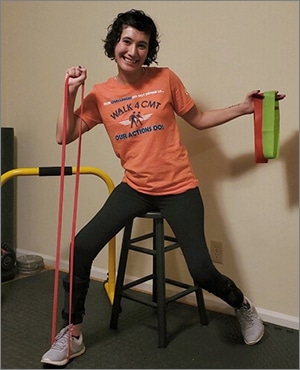
I have CMT2A. At times, growing up with CMT made life really hard. I was an overactive child and always channeled this energy into sports. My foot drop first appeared when I was 6 years old and at this point, I was already a gymnast, a dancer, and a swimmer. Although the foot drop made things hard, it never stopped me. I kept doing gymnastics and as I went through high school and I kept trying new things, like diving and martial arts.
Throughout my life, my symptoms have progressed and I had to “quit the gym” while I was in college because I was in an intensive program that crammed 4 years of learning into 2. In this time, my symptoms got really bad. I was no longer able to do activities with ease like I had in the past. When I finished school, I decided it was time to build the muscle back up. It was very frustrating at first, but with time I saw results. I built muscle that I didn’t think could be built up again and started doing more than I ever dreamed I’d be able to do.
I am just one example of how fitness has changed my life and given me so much back from what CMT has taken. I’m very excited to be a part of something so important and I look forward to hearing everyone’s CMTActive journey.
Julie Barnett (CMTActive Moderator)
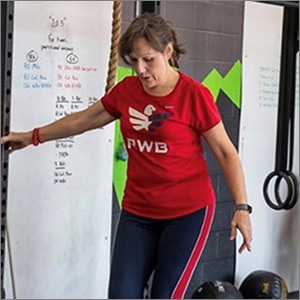
I am a wife, mother, new Grammy, volunteer, Air Force Veteran and more. I enjoy being creative with crocheting, sewing, quilting and other crafts. I also enjoy exercise such as lifting weights, functional exercise, indoor cycling, hiking, walking and sometimes yoga.
I was diagnosed with CMT at the age of 18 during my senior year of high school but ignored the doctor when he said I would be in a wheelchair in 20 years. There was no instruction on how to carry on at the time. I’m now 55 and no wheelchair yet. After high school and a couple years later, I missed regular physical movement and joined a gym. This is where the love for strength training began. I change my routines according to what my body needs and can do. I do what I can when I can to stay healthy, happy and fit for the time I’m in. I believe even if one part of my body is injured, weak or healing, I can still move other parts to help feel better.
Because of CMT, I have worn special orthotics in most of my shoes. I did experiment with AFOs when I was doing spin classes, which I did get certified to teach. After cracking three pair, I stopped wearing them. Also due to CMT, I don’t like standing still for long periods of time and I don’t run or outdoor cycle. Time, injuries and CMT have changed my physical body; I’ve learned to adapt and move on with what I can do. I strive to stay active even though at times it can be hard—last year, while walking to my mailbox, I wasn’t looking at the ground. I stepped on a rock, tore the ligament in my ankle and took bone from my ankle bone. More than eight weeks later, I had surgery. That was nine months ago, and I’m still not 100 percent yet.
Programs or groups like CMTActive are filled with people who want to learn more and become or continue to be active. I’m inspired by others who work through their challenges, especially those much older than me. A marathoner doesn’t decide one day to run 26.2 miles and then walk out the door the next day and do it. It takes time, practice, maybe even reading about and studying how to achieve it. Sometimes we must do that to become or stay active with various conditions.
I am currently a fitness instructor with CMT2A. I teach mostly older adult fitness classes that focuses on strengthening and functional movement. Many of these exercises are the same for all ages, just slightly modified at times. My mottos? Move more today than yesterday. Get strong, be strong, physically, mentally, spiritually. It takes all of it.
Mike Dreidger (CMTActive Moderator)
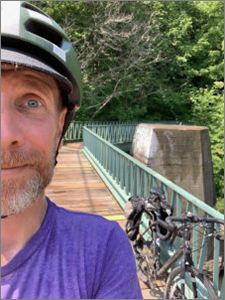
I live with CMTX, and I’m passionate about keeping active and a proponent of active transportation. I cycle to get to work and walk, swim and cycle in my free time.
I’m a Program Director focused on work engaging people and businesses on issues related to health and the environment. I have a BA in environmental studies with a sociology stream and a graduate certificate in environmental management and assessment.
I live in Toronto with my wife, Adrienne, and our mischievous cat, Diego. I love to explore the sights, sounds and tastes within my own city, as well as in destinations around the world.
CMTActive on Instagram (www.instagram.com/cmtactive/)
Bethany Meloche (CMTActive Instagram Moderator)
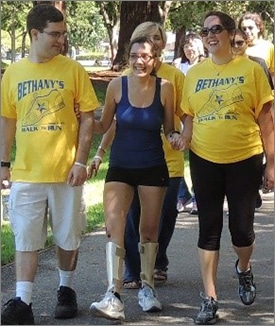
Several years ago I wrote “How Should A Body Be?” a coming-of-age story about learning to live with Charcot-Marie-Tooth disease. As a professional storyteller, I speak on the topics of facing fears, having vision and embracing your differences. I worked for the Charcot-Marie-Tooth Association for five years in the role of director of social media, and I remain a powerful patient advocate as a member on the CMTA Advisory Board.
I am a huge believer in the importance of being CMTActive, and I have reaped its life-changing rewards in my own life. Raised in Ann Arbor, I have a degree in nutritional science from the University of California, Berkeley, and currently live in London, where I write and go for long walks with my husband.
CMTA Facebook Discussion Group (www.facebook.com/groups/CMTAssociation/)
Kate Lair (Facebook Discussion Group Moderator)
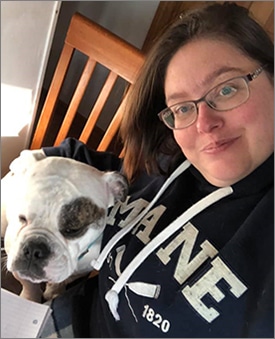
I was diagnosed with CMT in infancy and had my first surgery—Achilles lengthening&,mdash;before I could walk. My father and three sisters also have CMT, though the severity of symptoms differs among them. At 42, I’m now fully disabled as a result of respiratory issues secondary to CMT. Transitioning from working full time to total disability is lonely, and one way to combat the loneliness is to be active in the CMTA community. I also have a dog who helps combat loneliness. I live with my husband and teenage daughter (who also has CMT).
I serve as a resource on disability and insurance matters on the CMTA Advisory Board, and a few months ago I was asked to be co-moderator of the Facebook group. I’m certain I’ll make mistakes while moderating the chat, but I want everyone to know that my goal as moderator is to make the most people the most comfortable. I want the Facebook group to be a resource of information for people as well as an inclusive, supportive atmosphere for those that need to talk to people that “get it.” That’s always the goal.
Karen Brown (Facebook Discussion Group Moderator/Camp Footprint Volunteer/Southwestern Virginia Branch Leader)
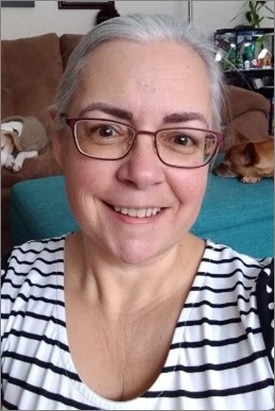
I was diagnosed with CMT1A on my 25th birthday. After a significant learning/grieving period, I figured out that the best way to live with CMT is by working to raise awareness, help fund research and create community with other CMTers. My most treasured volunteer role is with Camp Footprint, which I’ve been involved with since 2017, but I’ve also raised funds, written articles, given talks, started a new branch, participated in research and been a Show & Tell visual aid in my son’s grade school.
After about ten years participating in the FB group, I was asked to join the moderators, I know what a privilege and responsibility it is, and I’m honored to serve the community in this way. My hope in all I do with the CMTA is that others grappling with this disease will feel welcome, seen and supported, regardless of where they are on their individual journey. We’re in this together, and we’re stronger together.
Hannah Roberts (Youth Council Leader/Camp Footprint Volunteer)
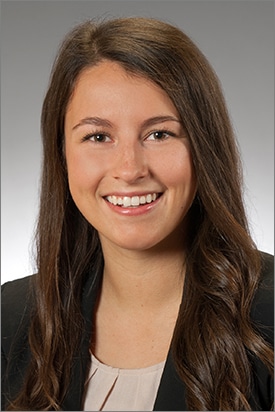
I graduated from Kent State University in 2017 with a Bachelor’s degree in business management and marketing. After graduation, I joined Northern Trust, a Wealth Management bank, as the Cleveland sales associate and marketing coordinator, where I am responsible for the coordination and execution of all marketing efforts, including events, as well as new business generation and sales processes.
Outside of work, I enjoy the great outdoors (hiking, biking, kayaking), cooking, watching documentaries, travelling to new places, and the theater. I love sunsets/sunrises, a good veggie burger with fries, the mountains, all things CLEVELAND, baseball, my dog Fitz and, above all, spending time with my family and friends.
I am passionate about volunteering and am involved with several philanthropic organizations. I’m a community friend for an individual through the Cuyahoga County Board of Developmental Disabilities, a camp counselor for the Charcot-Marie-Tooth Association’s Camp Footprint and co-leader of the CMTA Youth Council. I’ve also recently joined the Associate Board for Providence House, a crisis nursery in Cleveland, where I am co-chair of the Events Committee.
CMTA Nutrition Program
Sara Kevern (Nutrition Advisor)
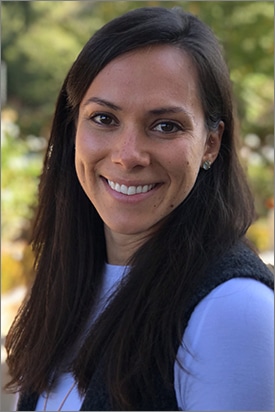
I am a registered dietitian and nutrition support specialist at Stanford Health Care and Stanford Children’s Health. I joined the neuromuscular team in 2019 to inaugurate and build nutrition services, and I work as part of the multi-disciplinary clinic with both adult and pediatric CMT patients to help optimize their nutrition. I completed my training at Ohio University and have been practicing as a clinical registered dietitian since 2011.
I believe that due to the high variability of individual outcomes and innately challenging nature of nutrition research, a safe and well-balanced exploration of nutrition therapy is warranted to pursue an individual’s optimal health. I enjoy the challenge of guiding patients safely through this process, and I look forward to contributing educated, informed, and safe nutrition advice to the CMT community.





